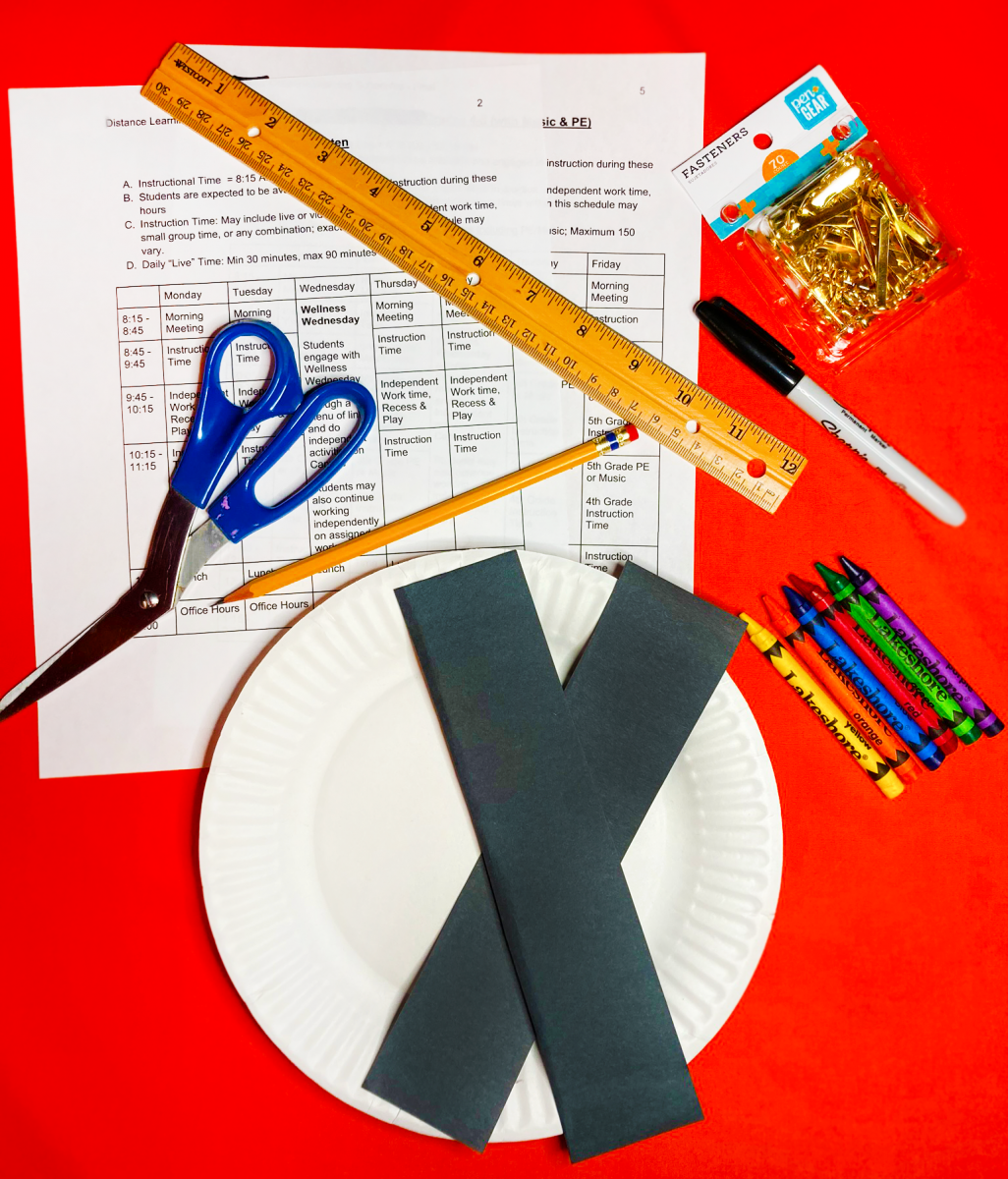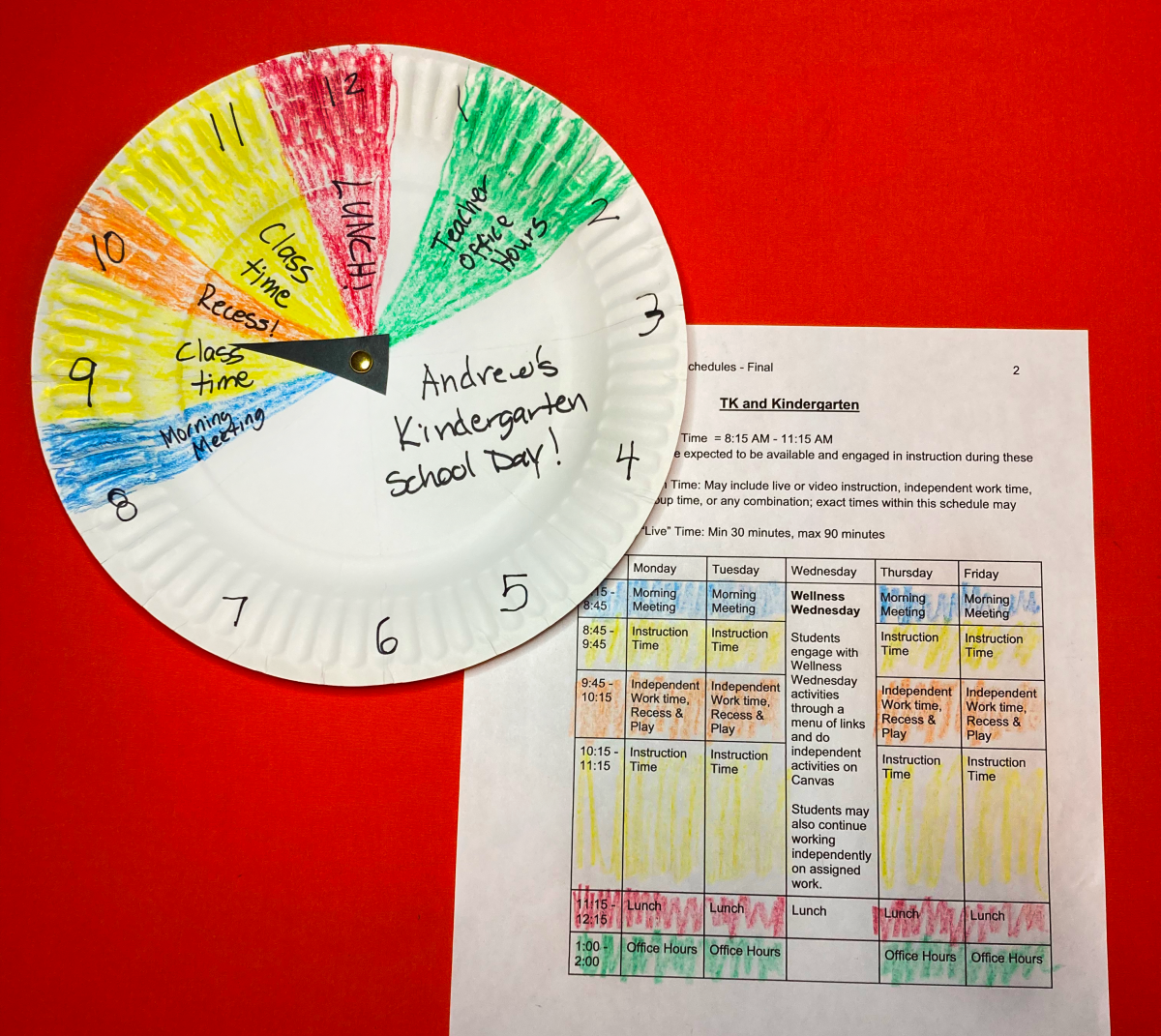School Day Clock
 With the beginning of the school year and so many schools starting off with distance learning, many of our children might be struggling with getting the hang of their daily school schedule. As an adult, I sometimes struggle with visualizing exactly what my day looks like with meetings, Zoom calls, writing, and remembering to take a lunch break. Our kids are starting a new school year with a completely different schedule than before. They are doing it from home, which means they are missing a lot of the visual cues they get for transitions during the day. This colorful school day clock is an interactive way for students to get a visual feeling of how their day looks by using items you probably already have on hand.
With the beginning of the school year and so many schools starting off with distance learning, many of our children might be struggling with getting the hang of their daily school schedule. As an adult, I sometimes struggle with visualizing exactly what my day looks like with meetings, Zoom calls, writing, and remembering to take a lunch break. Our kids are starting a new school year with a completely different schedule than before. They are doing it from home, which means they are missing a lot of the visual cues they get for transitions during the day. This colorful school day clock is an interactive way for students to get a visual feeling of how their day looks by using items you probably already have on hand.
 Having your child choose the colors for each time segment and coloring it in, gives them more ownership of their day. It can encourage higher engagement in each activity, even when they think it will be boring. Keeping the clock next to a print out of their daily schedule also helps younger students learn to recognize the information is the same, but is presented in different ways (math skills!). One is the schedule for the entire week and one is a day-by-day schedule that they can move themselves to track where they are in that day. The clock is fully customizable to each child’s schedule and it’s easy to add after school activities or extra brain breaks into the schedule as needed.
Having your child choose the colors for each time segment and coloring it in, gives them more ownership of their day. It can encourage higher engagement in each activity, even when they think it will be boring. Keeping the clock next to a print out of their daily schedule also helps younger students learn to recognize the information is the same, but is presented in different ways (math skills!). One is the schedule for the entire week and one is a day-by-day schedule that they can move themselves to track where they are in that day. The clock is fully customizable to each child’s schedule and it’s easy to add after school activities or extra brain breaks into the schedule as needed.
The best way to help your child/children thrive in this new school year is by establishing a routine and predictable schedule. The last five to six months have been unpredictable and that can cause anxiety and frustration for both children and parents. I know in my house my son is looking forward to having a set and predictable schedule.
Here are some ideas that were provided to parents by a local school district to help make a set schedule to help children get a handle on distance learning:
-
Students are unsure of what they should be working on and when to write it down.
Not only does writing out a schedule establish accountability for all parties, but it also brings clarity to an otherwise nebulous situation. -
Prioritize your nonnegotiable commitments.
Do you have learning allies (such as grandparents, siblings, or childcare) who can help fill the gap? Can you block time in your schedule and use flexible hours to support your child? -
Determine what goes into your schedule. Incorporate such important items as:
-
School-sponsored check-ins with teacher
-
Blocks of family availability
-
Times for independent structured learning activities (with software or print materials)
-
Breaks
-
Movement
-
Eating times
-
Social time
-
-
Weigh your options between a set schedule versus a checklist.
If a prescribed schedule is not working for your child, consider creating a checklist of “must do” and “may do” activities. -
Make it a partnership.
Work on a schedule with your child. Particularly if you are parenting a teen or tween, buy-in is essential. -
Set up easy monitoring.
Assign stations in the home for each activity, such that students can get up and move and you can easily monitor that learning stays on track.
 Not all of these strategies will work for every family or every child and that’s ok. We are students, teachers, and parents all learning how to navigate this school year, so remember to give yourself some grace. The beginning of a school year is always different and comes with challenges. This year has a few more challenges that might take a little more time to work through and find a flow.
Not all of these strategies will work for every family or every child and that’s ok. We are students, teachers, and parents all learning how to navigate this school year, so remember to give yourself some grace. The beginning of a school year is always different and comes with challenges. This year has a few more challenges that might take a little more time to work through and find a flow.
